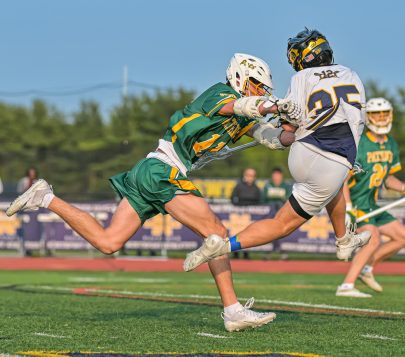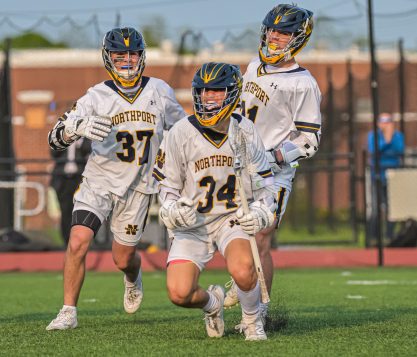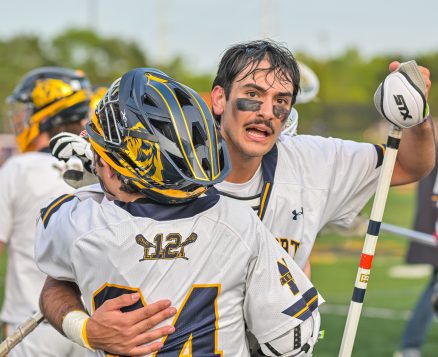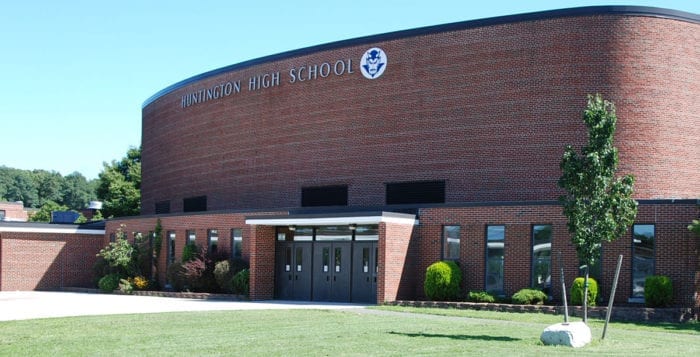By Daniel Dunaief
It sounds like something straight out of a superhero origin story.
With resistance to widely used drugs becoming increasingly prevalent among bacteria, researchers and doctors are searching for alternatives to stem the tide.
That’s where shape shifting molecules may help. Cold Spring Harbor Laboratory Professor of Organic and Click Chemistry John Moses and his team have attached the drug vancomycin to a molecule called bullvalene, whose atoms readily change position and configuration through a process called a thermal sigmatropic rearrangement as atoms of carbon break and reform with other carbon atoms.
The combination of the bullvalene and vancomycin proved more effective than vancomycin alone in wax moth larva infected with vancomycin resistant Enteroccoccus bacteria.
“Can I make a molecule that changes shape and will it affect bacteria? That was the question,” Moses said. The promising early answer was, yes!
Moses believes that when the bullvalene core is connected to other groups like vancomycin, the relative positions of the drug units change, which likely change properties related to binding.
The urgency for novel approaches such as this is high, as drug resistant bacteria and fungi infect about 2.8 million people in the United States per year, killing about 35,000 of them.
In his own life, Moses said his father almost died from a bacterial infection five years ago. Vancomycin saved his father’s life, although the infection became resistant to the treatment. Other drugs, however, conquered the resistant strain.
“We need to work hard and develop new antibiotics, because, without them, there will be a lot more misery and suffering,” Moses explained.
To be sure, an approach like this that shows promise at this early stage with an insect may not make the long journey from a great idea to a new treatment, as problems such as dosage, off target effects, toxicity, and numerous other challenges might prevent such a treatment from becoming an effective remedy.
Still, Moses believes this approach, which involves the use of click chemistry to build molecules the way a child puts together LEGO blocks, can offer promising alternatives that researchers can develop and test out on a short time scale.
“We shouldn’t be restricted with one set of ideas,” Moses said. “We should keep testing hypotheses, whether they are crazy or whatever. We’ve got to find alternative pathways. We’re complementary” to the standard approach pharmaceutical companies and researchers take in drug discovery.
Looking to history, Moses explained that the founders of the Royal Society in 1660 followed the motto “nullius in verba,” or take nobody’s word for it. He believes that’s still good advice in the 21st century.
The shape shifting star
Moses has described this bullvalene as a Rubik’s Cube, with the parts moving around and confounding the bacteria and making the drug more effective.
The CSHL scientist and his team don’t know exactly why shape shifting makes the drug work in this moth model.
He speculated that the combination of two vancomycin units on either side of a bullvalene center is punching holes in the cell wall of the bacteria.
Moses is eager to try to build on these encouraging early developments. “If you can make it, then you can test it,” he said. “The sooner the better, in my opinion.”
Moses acknowledged that researchers down the road could evaluate how toxic this treatment might be for humans. It didn’t appear toxic for the wax moth larvae.
Welcoming back a familiar face
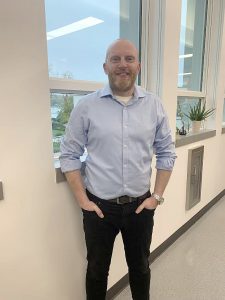
Photo by Rebecca Koelln
In other developments in his lab, Moses recently welcomed Adam Moorhouse back to his team. Moorhouse, who serves as Chemistry Data Analyst, conducted his PhD research in Moses’s lab at the University of Oxford.
Moorhouse graduated in 2008 and went on to work in numerous fields, including as an editor for the pharmaceuticals business and for his own sales consultancy. In 2020, he had a motorcycle accident (which he said was his fault) in which he broke 16 bones and was hospitalized for a while. During his recovery, he couldn’t walk.
At the time, he was working in the intense world of sales. After the accident, Moorhouse decided to build off his volunteer work with disabled children and become a high school teacher. After about 18 months of teaching, Moorhouse reconnected with Moses.
“It’s nice getting here and thinking about chemistry and thinking about ideas and communicating those ideas,” Moorhouse said.
He has hit the ground running, contributing to grants and helping to translate intellectual property into commercial ventures.
The chance to work on projects that get molecules into humans in the clinic was “really exciting,” Moorhouse said. “I’m back to try and support that.”
Moorhouse will be working to procure funding and to build out the business side of Moses’s research efforts.
“Where I’d like to lend a hand is in driving ongoing business discussions,” Moorhouse said. He wants to “get these small molecules into the clinic so we can see if they can actually treat disease in humans.” The vehicle for that effort eventually could involve creating a commercial enterprise.
Like Moses, Moorhouse is inspired and encouraged by the opportunity for small operations like the lab to complement big pharmaceutical companies in the search for treatments.
Moses believes the work his lab has conducted has reached the stage where it’s fundable. “We’ve done something that says, ‘we checked the box,’” he said. “Let’s find out more.”
Currently living on campus at CSHL, Moorhouse appreciates the opportunity to do some bird watching on Long Island, where some of his favorites include woodpeckers, herons, egrets, robins and mockingbirds.
He is tempted to get back on a motorcycle and to return to mountain biking.
As for his work, Moorhouse is excited to be a part of Moses’s lab.
“Back in my PhD days, [Moses] was always an idea machine,” Moorhouse said. “The aim is to move ideas to the clinic.”




